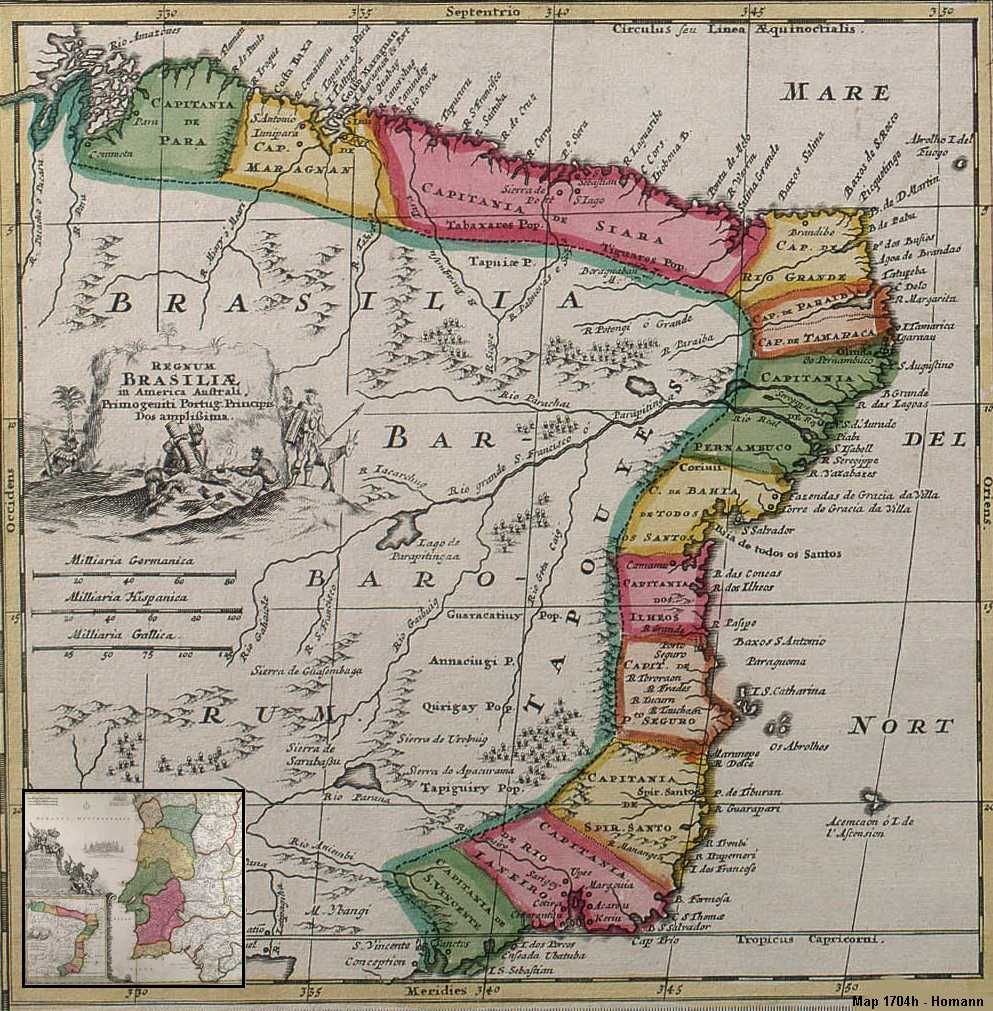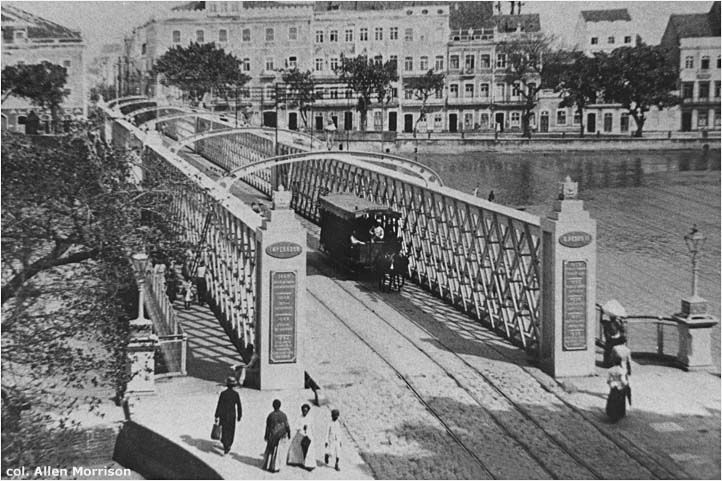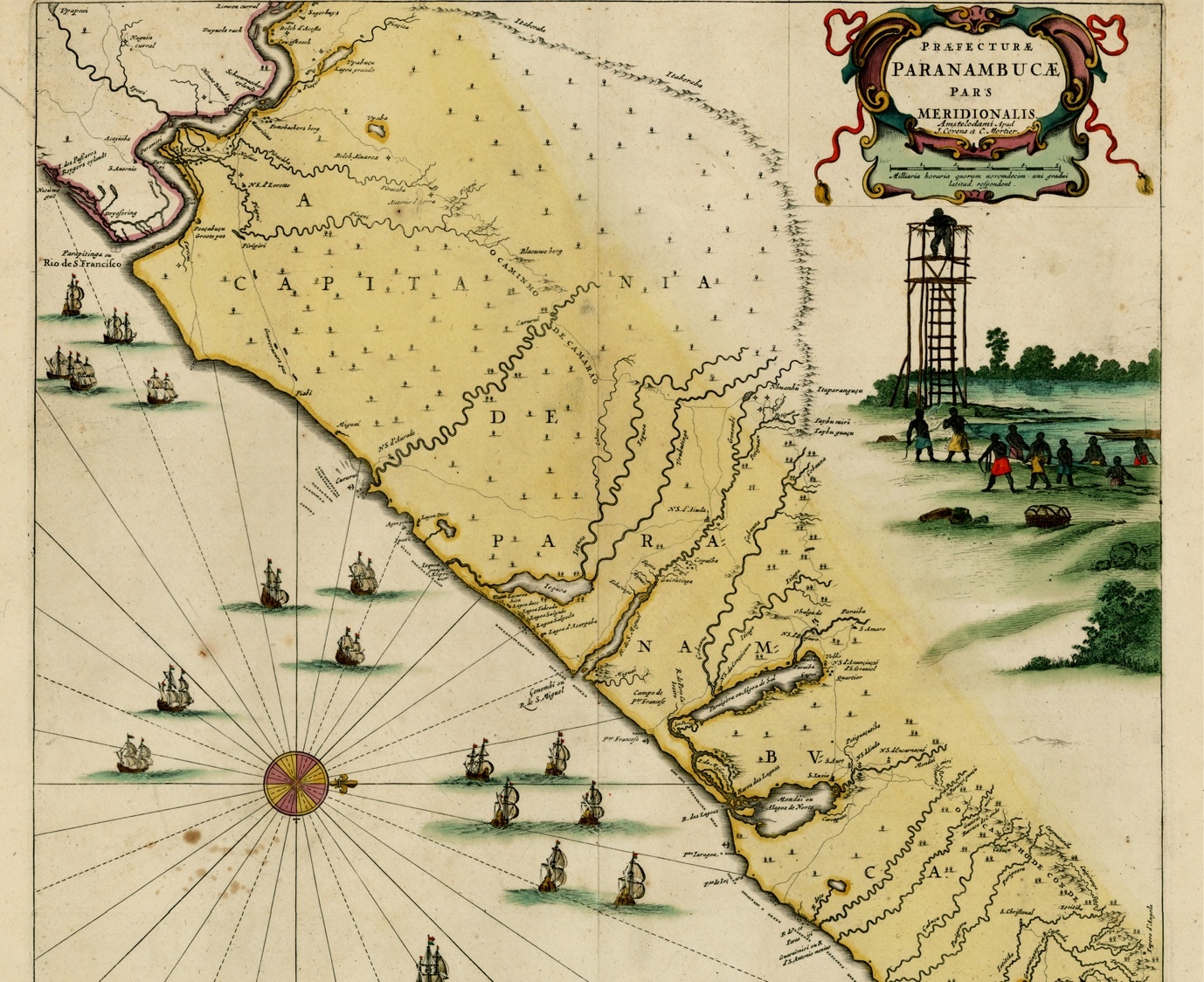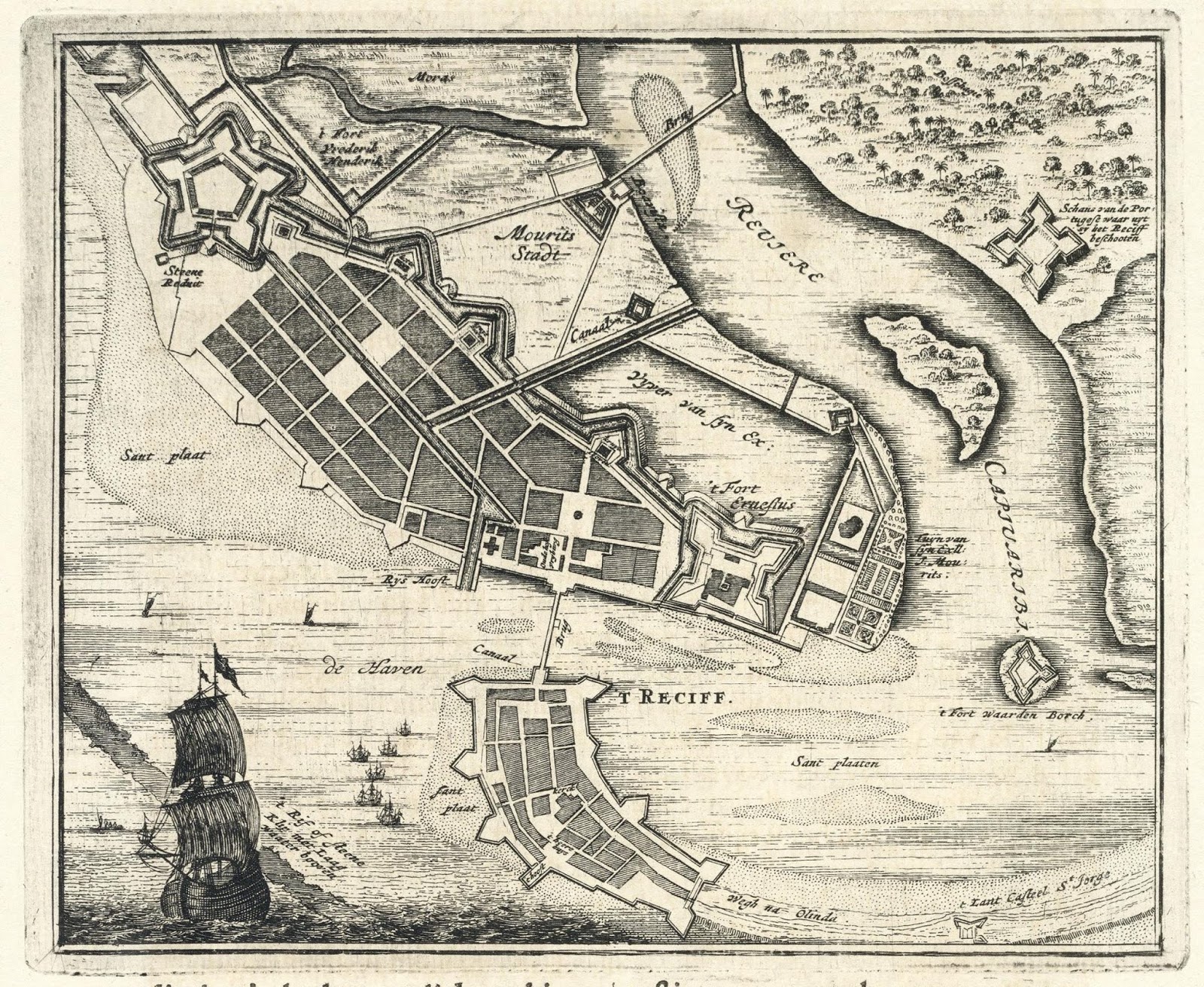Este post também está disponível em:
Português
English

Pernambuco and its capital Recife, have a turbulent history.
The history of Recife began in 1537: the king of Portugal divided the large colony into strips of land;
The lands, called Hereditary Captaincies, were given to wealthy entrepreneurs so that they could prosper on behalf of the Crown.
However, by dividing the lands, the king also divided the huge investments needed to make such a vast country manageable and, above all, profitable;
Few Hereditary Captaincies lasted, but Duarte Coelho managed to make a success of Pernambuco by having Olstill as its capital.
Pernambuco’s strongest consumer crop was sugar cane.
In 1630, the Netherlands conquered the area and put a big mark on the history of northeastern Brazil.

They ruled a large area that followed roughly from São Luís do Maranhão to Salvador, in Bahia. Under the inspiring rule of John Maurice of Nassau, Recife’s urban planning was realized by designing a street plan and building bridges, bringing in prominent architects.
When John Maurice had to leave Recife, there was then turmoil: a small army of Portuguese soldiers and local rebels took over the place expelling the Dutch completely from northeastern Brazil.
The History of Pernambuco and Recife is marked by conflicts between indigenous and Portuguese, Dutch domination and even an attempt at independence.
Discover the history of Pernambuco and Recife, one of the oldest states in Brazil.

História de Recife PE
History of Pernambuco and Recife
Indigenous people in Pernambuco
The territory where today is the state of Pernambuco was populated by several indigenous tribes such as Caetés, Cariris and Tabajaras, among other ethnic groups.
Each had its own language and customs and were often enemies of each other. This fact was important for the Europeans, as they made alliances with various indigenous peoples in order to conquer the territory.
Colonization of Pernambuco
Through the system of Hereditary Captaincies, Duarte Coelho took possession of the Captaincy of Pernambuco, initially called the New Lusitania Captaincy.
In 1535 the town of Olinda was founded and in 1537 it became a village.
Likewise, in 1537, the city of Recife was founded.
Not all the Hereditary Captaincies were successful, but thanks to the cultivation of sugar cane, the Captaincy of Pernambuco prospered.
At first, the Portuguese used indigenous slave labor in sugarcane farming.
However, the mill owners began to use black slaves on the plantations due to the lucrative slave trade with the Portuguese colonies in Africa.
Territory of the Captaincy of Pernambuco
The Captaincy of Pernambuco comprised a much larger territory than today. It incorporated what we call today the states of Paraíba, Rio Grande do Norte, Alagoas, Ceará and part of Bahia.

Looting of Recife in 1595
By the end of the 16th century, the Captaincy of Pernambuco had become one of the richest in the colony. This fact attracted the attention of the English, Dutch and French who organized expeditions to take the then capital, Olinda.
It is important to remember that, at this time, Portugal was united with Spain, in the period known as the Iberian Union.
In turn, Spain was at war with England and the Netherlands.
Thus, it was as much a matter of invading Olinda as Seville. The English, allied with the Dutch, seized Recife in 1595 and took several valuable products such as sugar, wood and cotton.
The Looting of Recife, an episode also known as James Lancaster’s Expedition in 1595 and Lancaster’s Pernambucan Expedition, refers to an English military expedition that took place in April 1595, during the Anglo-Spanish War, whose objective was the looting of the port of Recife, in the vicinity of Olinda, in Pernambuco, Colonial Brazil, which at the time was part of the Iberian Union.
Led by the English admiral James Lancaster, it was the only British Corsican expedition whose main objective was Brazil, and represented the richest booty in the history of Corsican navigation of the Elizabethan period.
The expedition sailed across the Atlantic capturing numerous ships before reaching its destination, Pernambuco, the richest captaincy in colonial Brazil. Lancaster took the port of Recife and remained there for almost a month, defeating a series of Portuguese counterattacks before leaving.
The amount of sugar, brazilwood, cotton and high-priced goods looted was robust, forcing him to charter Dutch and French ships there to take the goods to England, making the expedition an absolute military and financial success.
From then on, the Captaincy organized two companies for the defence of Recife and Olinda.
Dutch Occupation (1630-1645)
The Dutch invasion began in Bahia in 1624 and were expelled from the capital thanks to the action of a Portuguese-Spanish armada a year later.

However, they returned to conquer a piece of the sugar trade by invading Recife and Olinda in 1630.
Despite fierce fighting – Olinda was burned down – the Dutch settled in those lands until the outbreak of the Pernambuco Insurrection in 1645.

War of the Mascates
The Mascates’ War took place between 1710 and 1711 between the plantation owners concentrated in Olinda and Portuguese merchants living in Recife.
Many historians point to this war as the first nativist rebellion in Brazil.
After all, the conflict placed the white elite already born in Brazil and the newly arrived Portuguese from the metropolis on opposing sides.
Confederation of the Cariris
The Confederation of the Cariris or War of the Barbarians was a series of battles that took place between 1683 and 1713.
After the expulsion of the Dutch, the Portuguese colonizers continued to expand towards the northeastern hinterland. They sought to increase sugar and cotton crops, as well as pasture for cattle.
However, some indigenous tribes, such as the Cariris, Crateús and Cariús, joined together and began to attack the farms.
In order to defeat them, the northeastern landowners had to bring bandeirantes from São Paulo to fight them. The Confederation of the Cariris ended only in 1713 when the last pockets of resistance were exterminated in Ceará.
Pernambuco Revolution – 1817
In the first half of the 19th century, several territories of the American continent rebelled against European domination.
Thus, inspired by Enlightenment ideas and the Independence of the United States, a group of insurgents planned the emancipation of the now province of Pernambuco.
Victorious at first, the participants succeeded in establishing a provisional republican government, establishing freedom of worship and of the press.
They were severely repressed by troops sent by Dom João VI. As punishment, four participants were executed and the territory of Alagoas became an independent province.
Confederation of Ecuador – 1824
The Confederation of Ecuador was a separatist and republican revolt that took place in Pernambuco in 1824. It must be understood within the context of the First Reign, when Dom Pedro I was in power.
The Emperor had convened a Constituent Assembly to draw up the Magna Carta of the new country. However, dissatisfied with the result, he decided to dissolve it and grant a centralizing Constitution.
The Confederation of Ecuador was harshly repressed by imperial troops who attacked Recife and some of its leaders, such as Frei Caneca, were executed.
Praieira Revolution – 1848
The Praieira Revolution was a liberal movement. It advocated freedom of the press, the nationalization of retail trade and the end of the Moderator Power.
The protests began at the headquarters of the newspaper Diário Novo, located on Rua da Praia, and its members were known as “praieiros”.
The fighting began in Recife, but soon spread to the Zona da Mata of Pernambuco.
The rebellion would only end two years later with imperial intervention and several of its leaders were amnestied.
See Oldest churches in Pernambuco and the first church in Brazil
History of Pernambuco and Recife



















